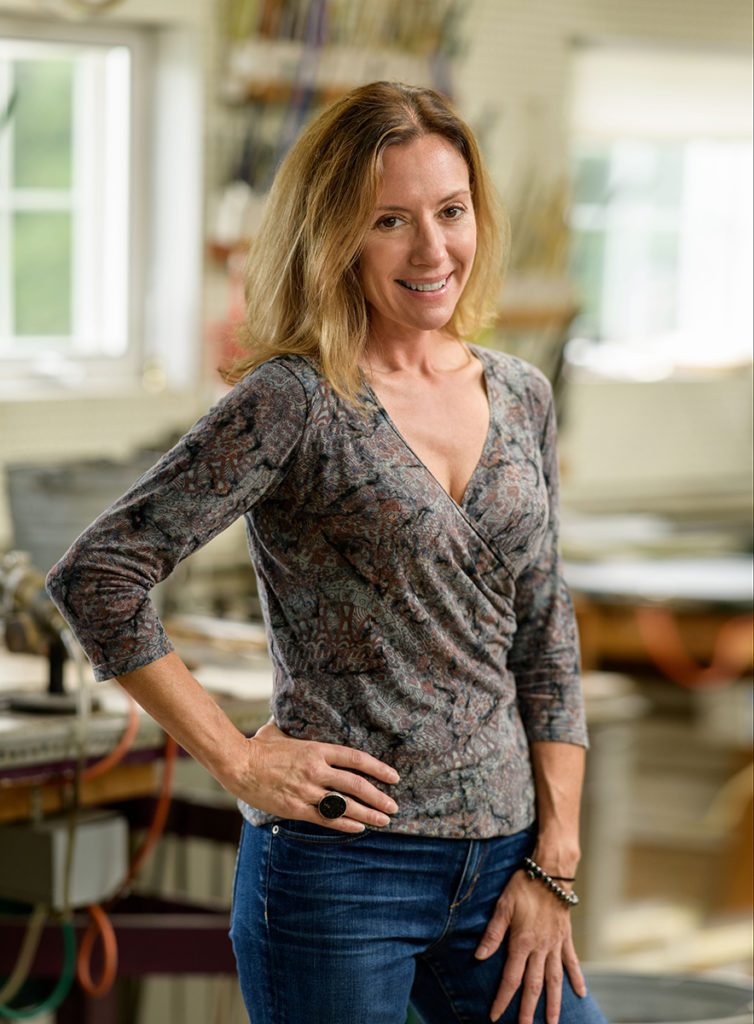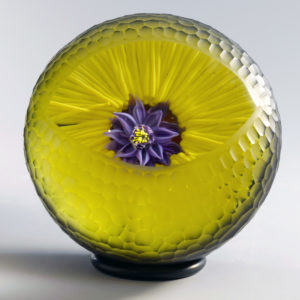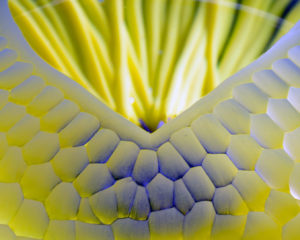Melissa Ayotte



Melissa Ayotte may have been born among glass rods and the roar of the torch, but she is no mere apprentice to her father. In fact, the same curiosities that drew her father to glass art initially pulled her in other directions. She began her studies in psychology, understanding human motivation and behavior. Her interest in mind sciences led Melissa to become more interested in the Arts. She took photography and sculpture at the New Hampshire Institute of Art while also delving into her own self-study of painting, poetry, and the creative process.
Her interest in art also drew her into her father’s glass studio where Melissa cold worked Rick’s pieces, pulled colored rod, or assisted on design. While finishing her Master’s program at Antioch New England Graduate School, she apprenticed in the glass studio with Rick, and it was then that her interest in glass began to take hold. Upon obtaining her M.A., Melissa pursued a career in counseling and clinical psychology, while continuing her work in the studio.
Glass initially served as a refuge from the day to day of her career. Still, as her aptitude developed into skill, Melissa started taking more glass and general art classes, soon realizing she had found her true interest. In 2000, she spent time assisting at Stankard Studio and began full-time at Ayotte Glass Studio, where she continues to create glass art.
Her oeuvre is vast and diverse, comprising small scale encased sculptures, stone-like pieces, native baskets, emotive florals, wall hangings, and her more recent “Circulus” series. In taking to glasswork and learning to capture these small, still moments of life, she is discovering the most human of motivations: to create what was not there before. Melissa aims to push the limits of the paperweight, creating novel pieces that reflect her sense of Nature- – earthly, human, and divine.
“I consider the limitations imposed by the spherical shape of the paperweight to be very liberating in the sense that I am forced to work with the boundaries of the glass and develop new ideas, techniques, and creative approaches for expanding those boundaries. The shape itself provides a structure from which I can evolve my own sense of creativity, ultimately aiming to evolve the art of paperweight making in general.”
“My art is my practice, bending and shaping a solid, glass, into a liquid form than creating a sculpture from this change in material. I believe the glass artist is more than a craftsman or artisan alone, rather a practitioner of transformation. This transformation happens in the glass artist as she creates it, within the material while it changes shape and, I hope, within the viewer when he engages the sculpture.”

